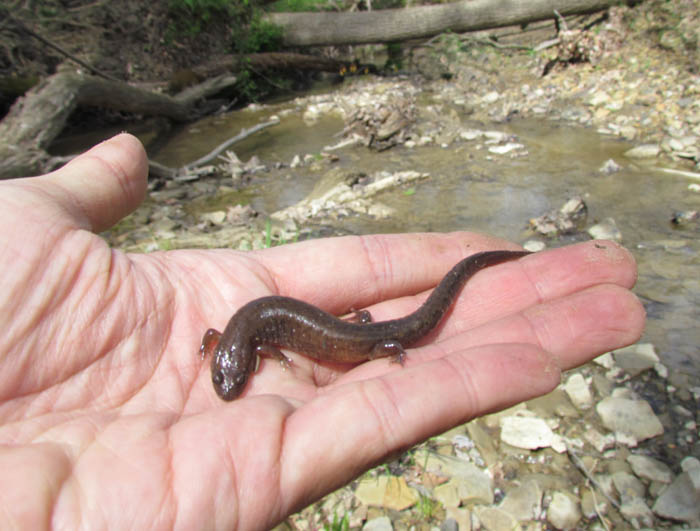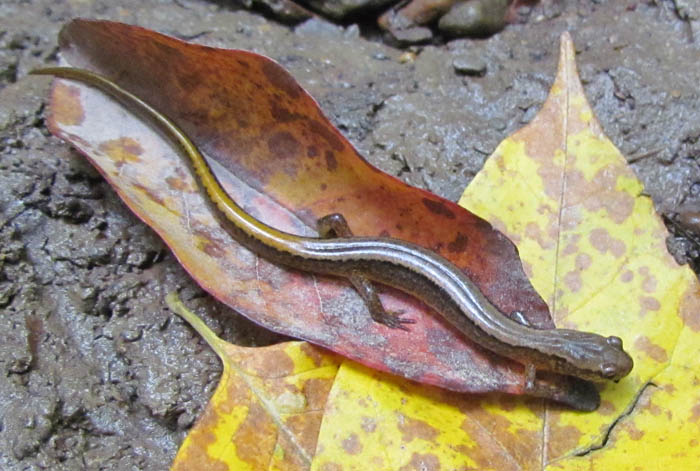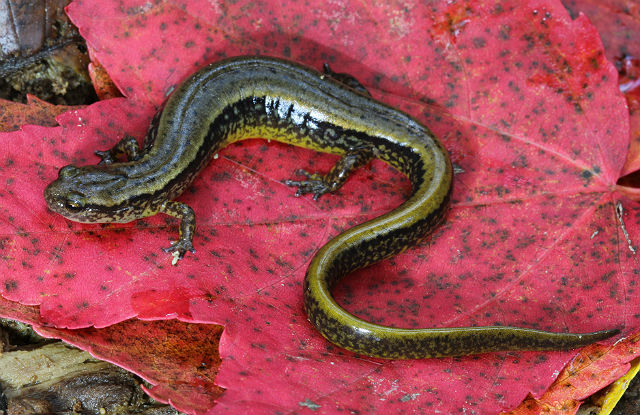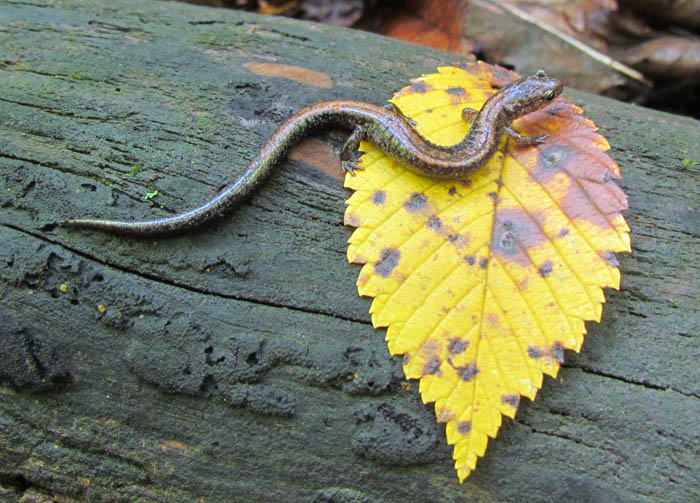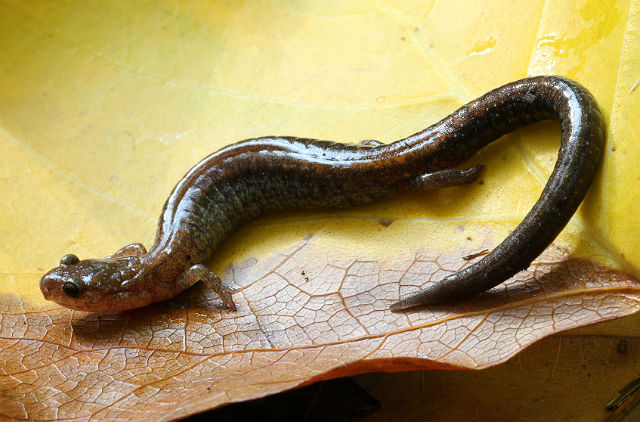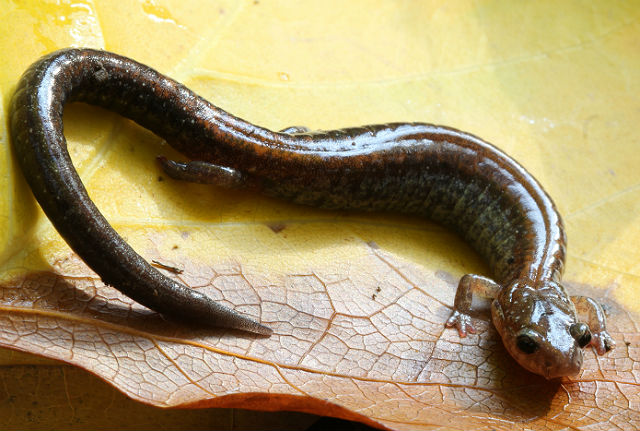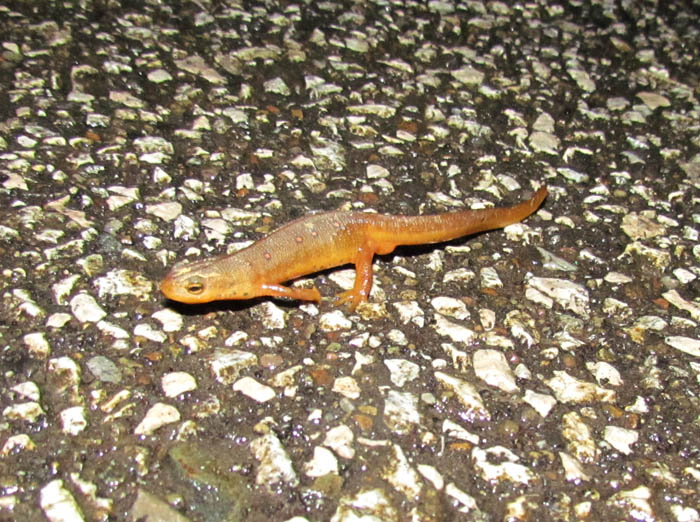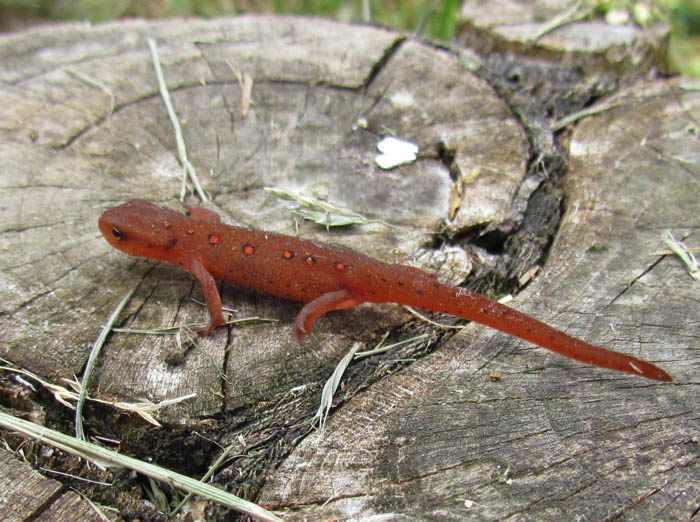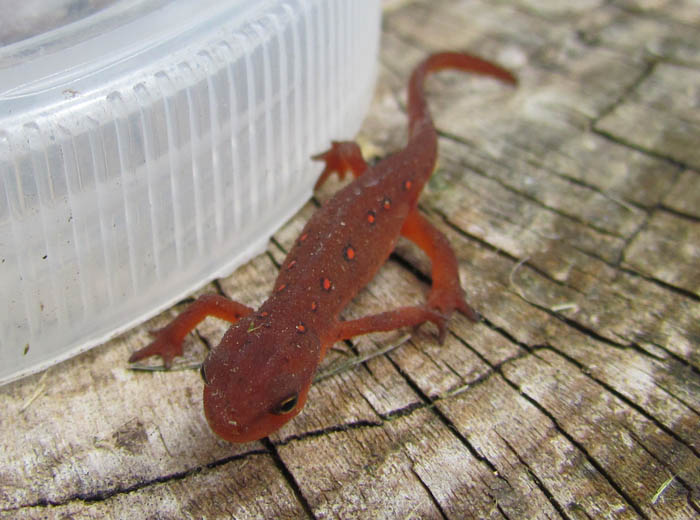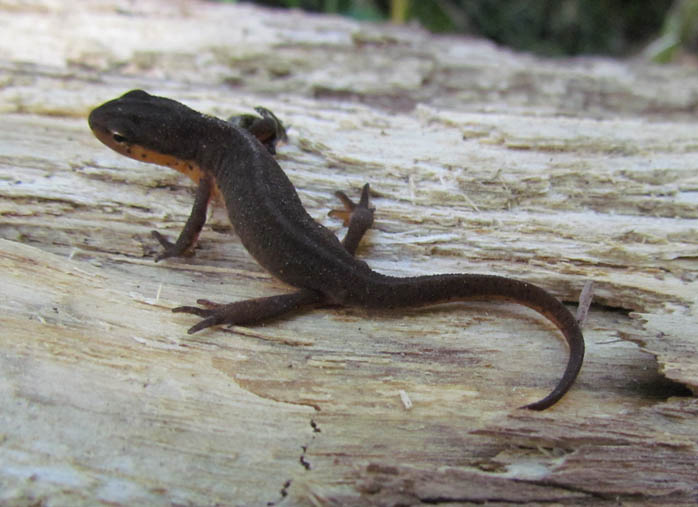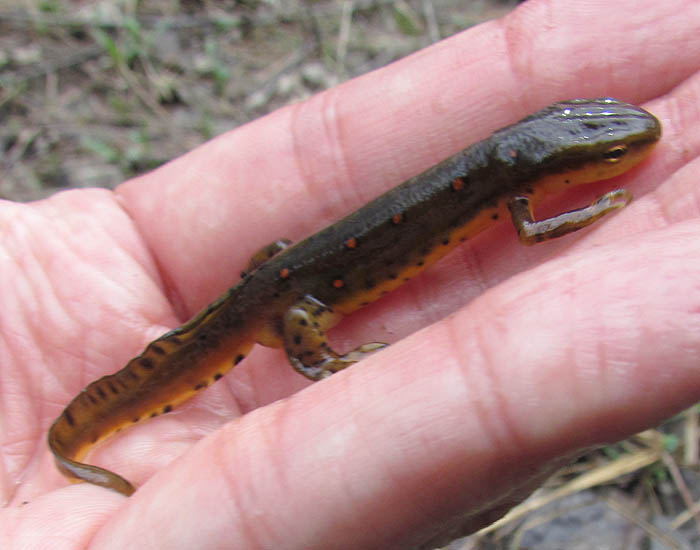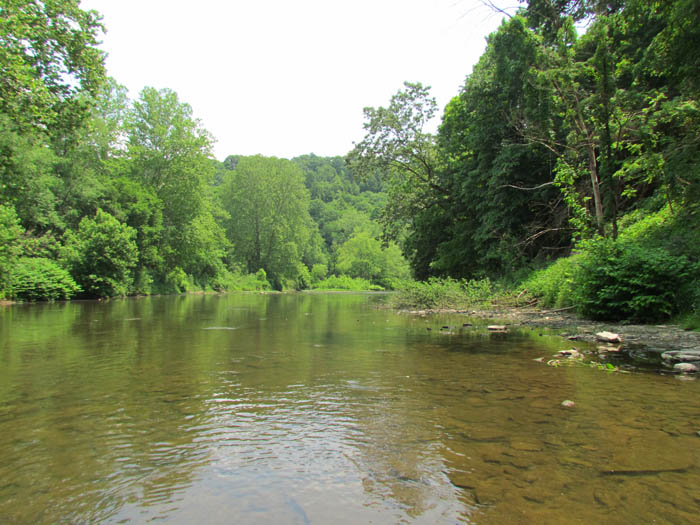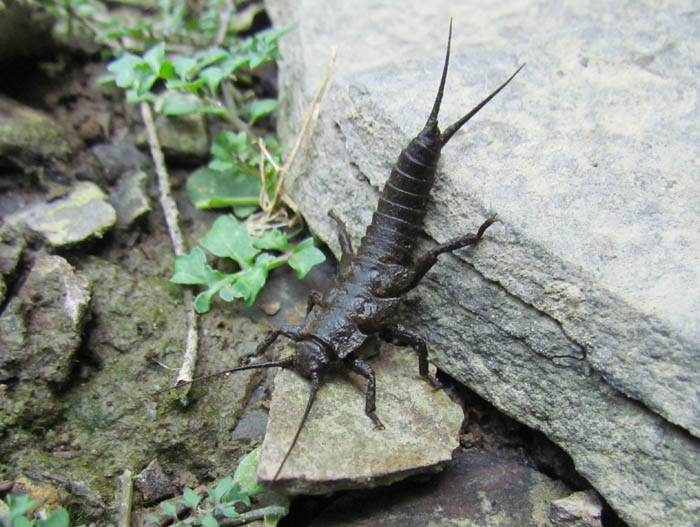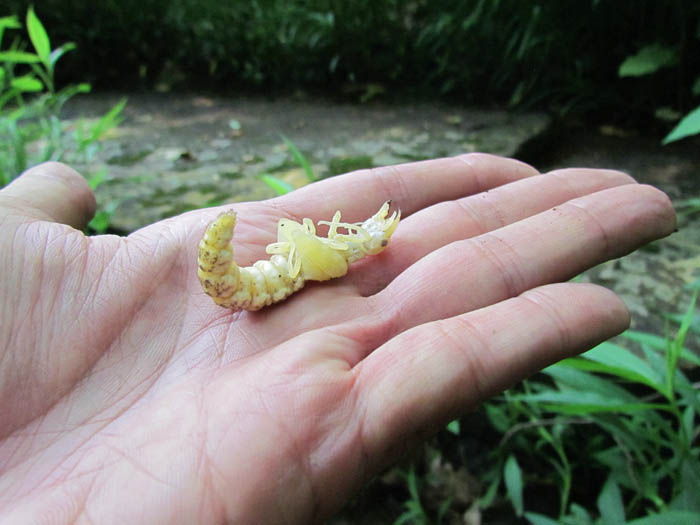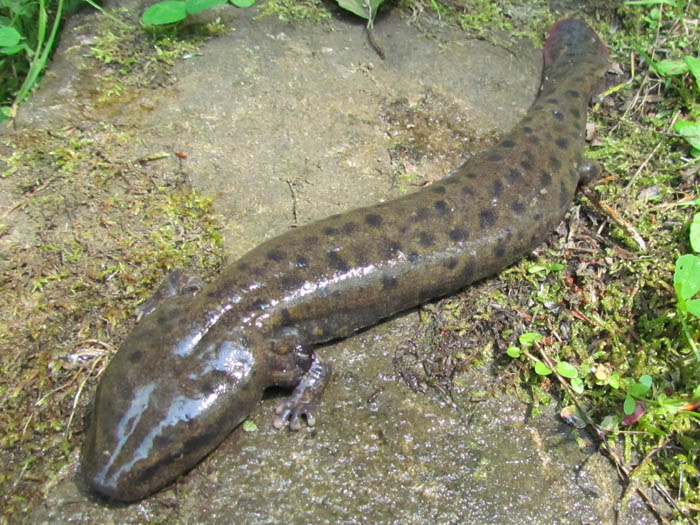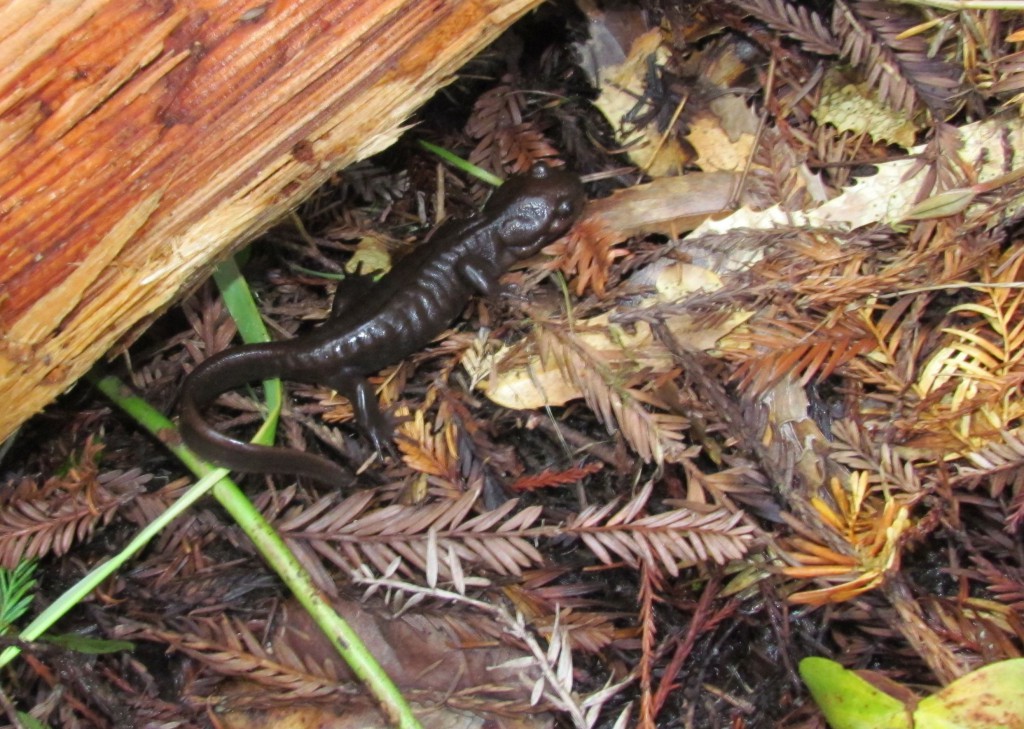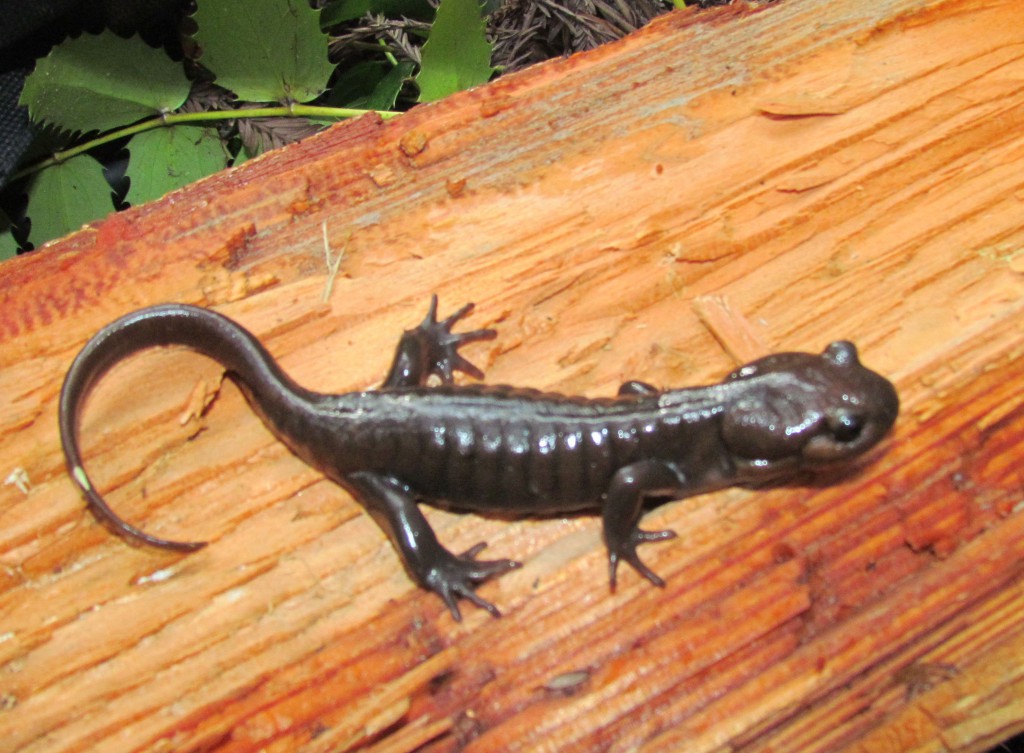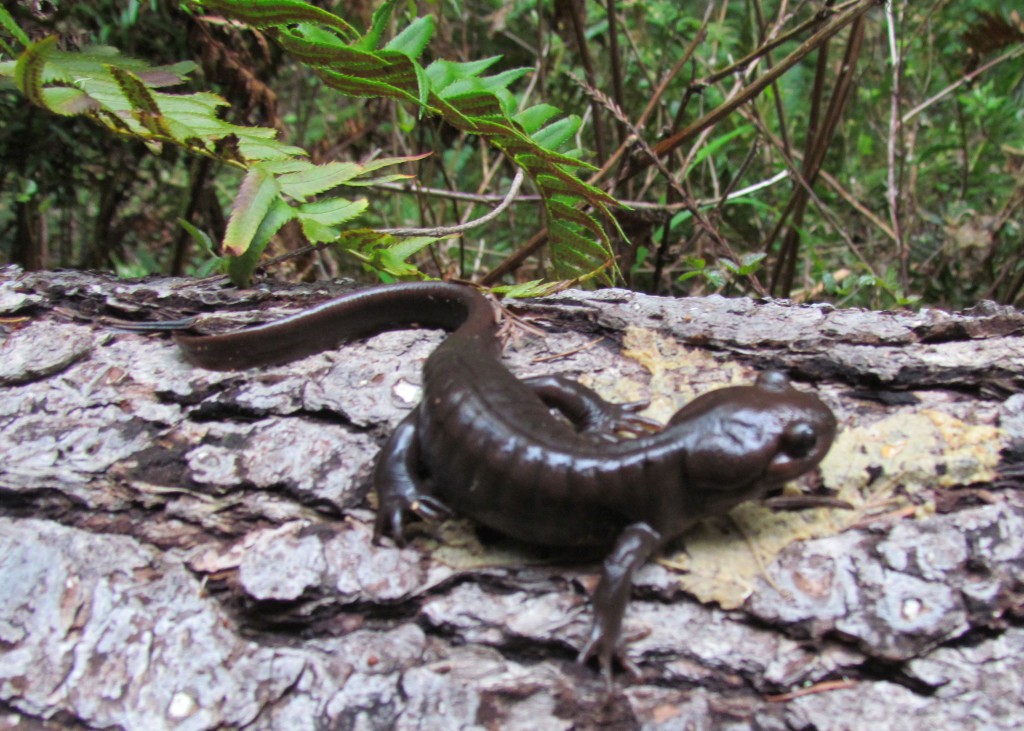Yes, it’s cold and Winter is upon us, but there still are herps to be found. While flipping rocks along the edge of this creek, I came across an amphibian I haven’t seen in awhile. Dusky Salamanders like wooded or partially wooded moist habitats with a running source of water. They may go into the water to find cover under rocks if disturbed.
If the stream substrate does not freeze, they can remain active year-round. In extremely cold conditions, they will burrow into the ground until they are below the frostline.
Northern Dusky Salamanders are mainly active at night, when they leave the log or rock that gives them protection during the day to find food along a steam or waterway. They hunt for insects, earthworms, slugs, snails, crustaceans and spiders.
Courtship between duskies is more romantic-looking than in other amphibians. During courtship, a male will approach a female while doing a “butterfly walk,” rotating his front limbs similar to a swimmer doing the butterfly stroke. The male then places his snout to the snout of the female. This “kiss” often results in the female choosing the male to fertilize her eggs.
The Northern Dusky Salamander is well named, for it is rather drab in color. They are one of the most abundant and easily found salamanders, but they are also one of the most difficult to catch. Duskies are alert, slippery, run swiftly, and are surprisingly good jumpers. To achieve their impressive jumps, they have stout, muscular hind legs in comparison to their front legs.
There are about a dozen types of Dusky Salamanders in the eastern United States, including two different species that reside in Ohio. Members of this family differ from all other salamanders in having an immovable lower jaw. The dusky must lift its head in order to open its mouth.





